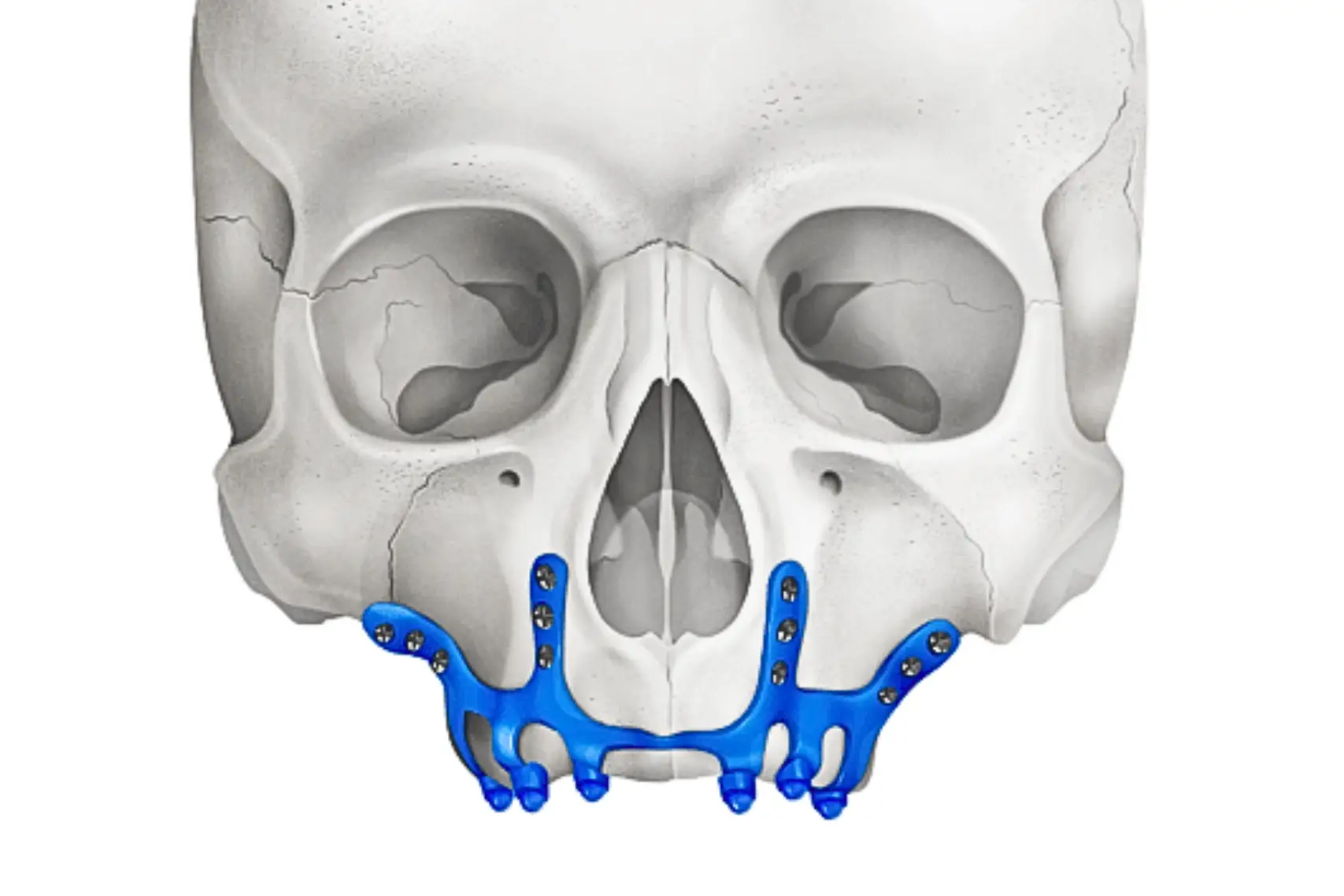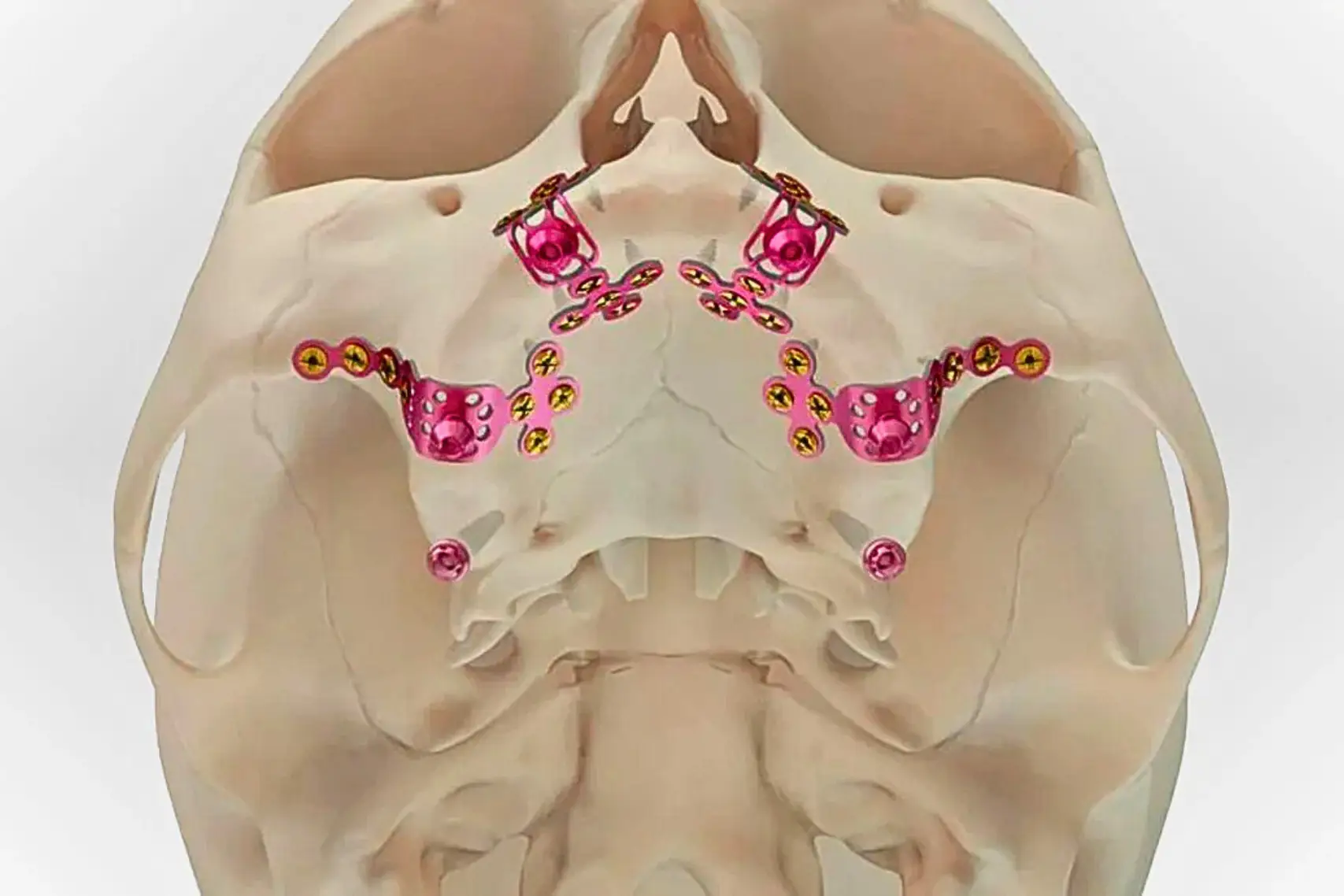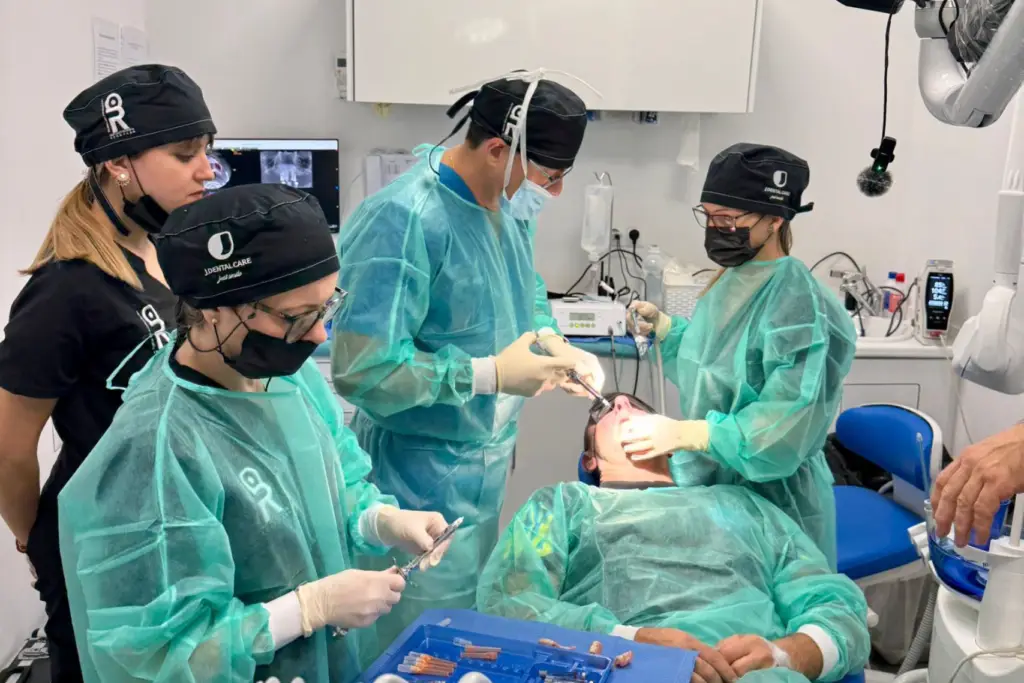Subperiosteal Dental Implants: A Comprehensive Guide
Subperiosteal implants offer a revolutionary alternative for patients with significant jawbone loss who are not candidates for traditional implants. Custom-made to fit a patient’s unique bone structure, these implants provide a reliable foundation for restoring dental function and aesthetics, often standing as a good alternative to zygomatic implants or other types of implants.
If you’ve ever wondered about subperiosteal dental implants, their unique design, and when they are the ideal solution for patients with severe bone resorption, keep reading to uncover everything you need to know with insights from Certified ZAGA Doctor Óscar Ríos, director of the renowned ZAGA Center Valencia!
What Are Subperiosteal Implants?
Unlike traditional implants, which are embedded directly into the bone (jawbone, or zygomatic bone, depending on the procedure and the type of dental implants needed), subperiosteal implants rest on top of the bone but beneath the gum tissue. This unique placement makes them an ideal solution for patients with insufficient bone mass, as they do not require bone grafting procedures or sinus lifts.
Each subperiosteal implant is made from a biocompatible titanium framework designed using advanced 3D imaging and CAD-CAM technology to ensure a perfect fit for the patient’s jaw or maxilla. Once placed, the implant provides a stable base for securing prosthetic teeth, which can be fixed or removable depending on the patient’s preferences.
Patients who choose subperiosteal implants often experience immediate improvements in both the functionality and appearance of their smile, regaining the ability to chew, speak, and smile with confidence.
Who Benefits from Subperiosteal Implants?
Subperiosteal implants are a game-changer for patients facing challenges like advanced bone loss, often caused by conditions such as aging, periodontal disease, or trauma. Many of these individuals may have previously been told that they are not candidates for dental implants due to the quantity or density of bone a regular implant requires.
These implants are especially suitable for individuals who wish to avoid more invasive surgeries, such as bone grafting. By offering a minimally invasive alternative, subperiosteal implants cater to patients seeking quick results and a more comfortable recovery process.
In addition to providing functional benefits, subperiosteal implants also help restore aesthetics, giving patients a natural-looking smile that enhances their self-esteem even when regular implants are not an option anymore due to maxillary atrophy.
Why Choose Subperiosteal Implants? How?
Subperiosteal implants address the limitations of traditional implantology by offering a solution tailored to the unique needs of patients with advanced bone loss.
These implants do not rely on osseointegration—the process of fusing with the bone—which eliminates the need for lengthy recovery periods. The custom design ensures a perfect fit, reducing the likelihood of complications and providing long-term stability.
Moreover, advancements in dental technology, such as 3D imaging and precision engineering, have significantly improved the success rates and accessibility of subperiosteal implants. Patients can now benefit from a streamlined process that minimizes discomfort and delivers predictable outcomes.
Subperiosteal Implants vs. Zygomatic Implants: Which Is Right for You?
Subperiosteal Dental Implant animation from ZAGA Center Saint Petersburg – Certified ZAGA Doctor Taras Yurov
"Subperiosteal implants are special implants that sit on top of the jawbone under the gums. They are only used when the jawbone is very thin or has lost a lot of bone. "
Dr. Óscar Ríos, certified ZAGA Doctor from ZAGA Center Valencia Discover more here!
| Criteria | Subperiosteal Implants | Zygomatic Implants |
|---|---|---|
| Placement Technique | Placed directly on top of the jawbone, beneath the gum tissue. The framework is custom-made to match the patient's bone structure, avoiding the need for grafting or extensive drilling into dense facial bones. | Anchored into the zygomatic bone (cheekbone) and involves a longer, more complex surgical procedure, which needs to be performed by an experienced surgeon to avoid complications. |
| Recovery Time | Typically have a shorter recovery period, as the procedure doesn't involve deep drilling into the facial bones. | May require a longer recovery period due to the extensive surgical process. |
| Suitability | Ideal for patients who suffer from maxillary atrophy but still have enough bone to support this kind of implant. | Better suited for cases where extreme bone loss has extended beyond the maxilla and requires anchoring into denser bone structures. Stands as the last resort for patients who want fixed teeth when subperiosteal implants aren't viable. |
| Aesthetic and Functional Outcomes | Both options restore functionality and aesthetics, but the choice depends on the patient's anatomy, medical history, bone condition, and personal preferences. Consulting with a dental specialist is critical to determine the most appropriate treatment plan. | |
As both subperiosteal and zygomatic implants are complex procedures, the best recommendation would always be to choose the right professional for the treatment. For example, doctors certified by the ZAGA Network, who work aligned with the ZAGA Philosophy and its “patient-first” approach, always addressing each patient’s concrete needs; besides that, Certified ZAGA Doctors are internationally recognized as full-mouth rehabilitation experts with years of experience achieving the best outcomes.
Check our doctor locator and find the closest ZAGA Center to you in Smile24h!
The Subperiosteal Implant Procedure
The journey to restoring your smile with subperiosteal implants involves a few key stages:
- Initial Assessment and Imaging: A thorough evaluation, including 3D imaging, helps determine the feasibility of subperiosteal implants for your specific case.
- Design and Fabrication: Using advanced CAD-CAM technology, a custom titanium framework is designed to match your jawbone contours. This step ensures a precise fit for long-term success.
- Surgical Placement: Under local anesthesia or sedation, the implant is placed above the bone but beneath the gum tissue. Temporary prosthetics can often be secured during the same appointment.
- Healing and Final Prosthesis: After a short recovery period, permanent prosthetics are attached, providing a fully restored smile that looks and feels natural.
Maintaining Subperiosteal Implants for Long-Term Success
Caring for subperiosteal implants is straightforward and closely resembles maintaining natural teeth:
- Brush after meals using a soft-bristled toothbrush.
- Use an antibacterial mouthwash to minimize plaque buildup.
- Schedule regular dental check-ups and professional cleanings to ensure the implants remain in excellent condition.
By following these simple steps, patients can enjoy the benefits of their subperiosteal implants for many years.
A Life-Changing Solution for Patients with Bone Loss
Subperiosteal dental implants not only restore dental function and aesthetics but also enhance the quality of life for patients who have struggled with traditional dentures or were previously considered unsuitable for implants. With advancements in dental technology, this innovative solution offers hope and confidence to individuals seeking a permanent alternative to missing teeth.
If you’ve been told that traditional implants aren’t an option, don’t give up on achieving the smile you deserve. Schedule a consultation with a dental professional to explore how subperiosteal implants can transform your dental health and confidence.

Postgraduate in Oral Implantology at the University of Los Angeles (USA). Member of the leading scientific societies in the field of dentistry: Spanish Society of Implants, Spanish Society of Periodontology and Osseointegration, and Spanish Society of Oral Surgery
Still have questions? Find your nearest specialist and discover how we can help improve your quality of life with expert care





